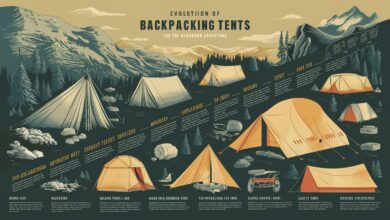AirGuide: The Comprehensive Guide to Air Travel and Navigation

Air travel has revolutionized the way we connect with the world. It allows us to traverse continents in mere hours, fostering global business, tourism, and cultural exchange. Understanding air travel can help travelers maximize their experiences and minimize potential issues.
Overview of AirGuide
AirGuide is designed to provide a thorough understanding of all aspects of air travel. From the history and mechanics of flying to practical advice on booking flights and navigating airports, this guide aims to be your go-to resource for air travel information.
History of Air Travel
Early Flights
The history of air travel dates back to the early 20th century with the Wright brothers’ first powered flight in 1903. This monumental event paved the way for the development of commercial aviation.
Evolution of Commercial Aviation
Commercial aviation began to take shape in the 1920s and 1930s, with airlines offering scheduled flights between major cities. The industry has since evolved with advancements in aircraft technology, leading to the modern air travel experience we know today.
Understanding Air Travel
How Planes Fly
Aircraft fly by generating lift through their wings. The shape of the wings causes air pressure differences that lift the plane into the air. Engines provide the necessary thrust to propel the aircraft forward, while the tail and ailerons help with stability and direction.
Different Types of Aircraft
There are various types of aircraft used in commercial aviation, including narrow-body, wide-body, and regional jets. Each type is designed to serve specific routes and passenger capacities, from short domestic flights to long-haul international journeys.
Booking Flights
Finding the Best Deals
To find the best deals on flights, it’s important to be flexible with travel dates and book in advance. Utilize flight comparison websites and set up fare alerts to stay updated on price changes.
Booking Strategies
Strategies for booking flights include using frequent flyer miles, considering alternative airports, and booking connecting flights instead of direct ones. These methods can often result in significant savings.
Online vs. Offline Booking
While online booking offers convenience and the ability to compare prices easily, offline booking through travel agents can provide personalized service and sometimes access to exclusive deals.
Choosing the Right Airline
Major Airlines
Major airlines, often referred to as full-service carriers, offer a range of services includingchecked baggage, in-flight meals, and entertainment. Examples include Delta, American Airlines, and British Airways.
Budget Airlines
Budget airlines, such as Ryanair and Southwest, offer lower fares by minimizing costs and providing fewer complimentary services. These airlines are ideal for travelers looking to save money.
Comparing Services
When choosing an airline, compare factors such as ticket prices, baggage policies, seat comfort, and customer service. Reading reviews and checking airline ratings can also help in making an informed decision.
Flight Classes Explained
Economy
Economy class is the most affordable option, offering basic amenities. Seats are generally narrower and have less legroom compared to higher classes.
Business
Business class offers more comfort with wider seats, more legroom, and enhanced services such as priority boarding and superior in-flight meals.
First Class
First class provides the highest level of comfort and luxury, with spacious seats that often convert into beds, premium dining options, and exclusive lounges.
Premium Economy
Premium economy is a middle ground between economy and business class, offering extra legroom, better seats, and enhanced services at a higher price than economy but lower than business class.
Understanding Airfares
Fare Classes
Airlines categorize tickets into fare classes that determine the price, flexibility, and benefits associated with the ticket. These classes are often labeled as letters (e.g., Y for full-fare economy).
Factors Affecting Prices
Airfare prices are influenced by factors such as demand, seasonality, fuel prices, and competition among airlines. Booking in advance and avoiding peak travel times can help secure lower fares.
Hidden Fees
Be aware of hidden fees such as baggage charges, seat selection fees, and onboard refreshments. These can add up and significantly increase the overall cost of your flight.
Preparing for Your Flight
Packing Tips
Pack light and only bring essentials to avoid extra baggage fees. Use packing cubes to organize your items and make sure to follow airline regulations on carry-on and checked baggage sizes and weights.
Travel Documents
Ensure all travel documents, including passport, visa (if required), and boarding pass, are in order. It’s advisable to have both digital and physical copies of important documents.
Pre-Flight Checklist
Create a pre-flight checklist that includes confirming your flight, checking in online, and arranging transportation to the airport. Arrive at the airport well in advance to allow time for security checks.
Navigating Airports
Major Hubs
Familiarize yourself with major airport hubs like JFK, LAX, and Heathrow. These airports often have extensive services and amenities but can be more challenging to navigate due to their size.
Security Procedures
Security procedures include screening of carry-on luggage and personal items. Be prepared to remove electronics, liquids, and shoes as per TSA guidelines. Knowing what to expect can expedite the process.
Lounge Access
Airport lounges offer a comfortable space to relax before your flight, with amenities such as complimentary food and drinks, Wi-Fi, and quiet areas. Access may be available through frequent flyer programs or credit card perks.
Airport Services and Amenities
Dining Options
Airports offer a variety of dining options ranging from fast food to gourmet restaurants. Research the options available at your departure and arrival airports to plan your meals accordingly.
Shopping
Many airports have extensive shopping areas with duty-free shops offering tax-free goods, as well as retail stores selling clothing, electronics, and souvenirs.
Wi-Fi Access
Most airports provide free Wi-Fi, though the quality and availability can vary. Some airports offer premium Wi-Fi services for a fee, providing faster and more reliable connections.



